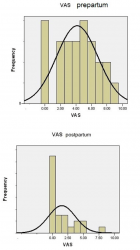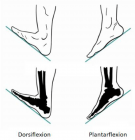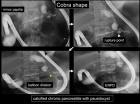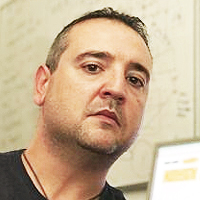Abstract
Research Article
Mechanistic Insights into UV Spectral Changes of Pyruvic Acid and Pyruvate Part 1: Interaction with Water Molecules
Emma A Petersen-Sonn, Malte F Jespersen, Matthew S Johnson and Kurt V Mikkelsen*
Published: 16 July, 2024 | Volume 7 - Issue 2 | Pages: 100-107
We investigate how the UV spectra of pyruvic acid (PA) and pyruvate are impacted by interactions with water molecules. In particular, we would like to understand the mechanistic origin of the blue shift in the n →− π∗ transition. Pyruvic acid is the simplest α-keto organic acid and is common in the environment. We use density functional theory to optimize geometries to determine excitation energies and find that the excitation energies of the two main pyruvic acid conformers and pyruvate blue shift when interacting with 1 to 4 water molecules, both in vacuo and in a solvent. The excitation wavelength is blue-shifted by 0.9-9.2 nm when adding water molecules to the lowest energy conformer of PA. Calculations of the UV spectra of pyruvic acid (PA) and pyruvate are crucial for understanding the impact of the interactions with water molecules.
Read Full Article HTML DOI: 10.29328/journal.ijpra.1001092 Cite this Article Read Full Article PDF
Keywords:
Pyruvic acid; Water cluster; UV-VIS; TD-SCF
References
- George C, Ammann M, D’Anna B, Donaldson D, Nizkorodov SA. Heterogeneous photochemistry in the atmosphere. Chem Rev. 2015;115(10):4218-58. Available from: https://doi.org/10.1021/cr500648z
- Ciuraru R, Fine L, Van Pinxteren M, D’Anna B, Herrmann H, George C. Photosensitized production of functionalized and unsaturated organic compounds at the air-sea interface. Sci Rep. 2015;5:1-10. Available from: https://doi.org/10.1038/srep12741
- Gordon BP, Moore FG, Scatena LF, Richmond GL. On the rise: Experimental and computational vibrational sum frequency spectroscopy studies of pyruvic acid and its surface-active oligomer species at the air-water interface. J Phys Chem A. 2019;123(49):10609-19. Available from: https://doi.org/10.1021/acs.jpca.9b08854
- Anglada JM, Martins-Costa MT, Francisco JS, Ruiz-López MF. Photoinduced oxidation reactions at the air-water interface. J Am Chem Soc. 2020;142(38):16140-55. Available from: https://doi.org/10.1021/jacs.0c06858
- Horowitz A, Meller R, Moortgat GK. The uv–vis absorption cross sections of the α-dicarbonyl compounds: pyruvic acid, biacetyl, and glyoxal. J Photochem Photobiol A Chem. 2001;146(52):19-27. Available from: https://doi.org/10.1016/S1010-6030(01)00601-3
- Mellouki A, Mu Y. On the atmospheric degradation of pyruvic acid in the gas phase. J Photochem Photobiol A Chem. 2003;157(2-3):295-300. Available from: https://doi.org/10.1016/S1010-6030(03)00070-4
- Keller-Rudek H, Moortgat G, Sander R, Sörensen R. The mpi-mainz UV/vis spectral atlas of gaseous molecules of atmospheric interest. Earth Syst Sci Data. 2013;5(2):365-73. Available from: https://doi.org/10.5194/essd-5-365-2013
- Burkholder J, Sander S, Abbatt J, Barker J, Cappa C, Crounse J, et al. Chemical kinetics and photochemical data for use in atmospheric studies; evaluation number 19. Tech. rep., Pasadena, CA: Jet Propulsion Laboratory, National Aeronautics and Space Administration. Available from: https://www.researchgate.net/profile/Robert-Huie/publication/343224193_NASA-JPL_Evaluation_19-5/links/5f1de1e192851cd5fa4b0cef/NASA-JPL-Evaluation-19-5.pdf
- Blair SL, Reed Harris AE, Frandsen BN, Kjaergaard HG, Panguí E, Cazaunau M, et al. Conformer-specific photolysis of pyruvic acid and the effect of water. J Phys Chem A. 2020;124(7):1240-52. Available from:https://doi.org/10.1021/acs.jpca.9b10613
- Chai JD, Head-Gordon M. Long-range corrected hybrid density functionals with damped atom-atom dispersion corrections. Phys Chem Chem Phys. 2008;10:6615-20. Available from: https://doi.org/10.1039/b810189b
- Yanai T, Tew D, Handy N. A new hybrid exchange-correlation functional using the coulomb-attenuating method (cam-b3lyp). Chem Phys Lett. 2004;393:51-7. Available from: https://doi.org/10.1016/j.cplett.2004.06.011
- Dunning Jr TH. Gaussian basis sets for use in correlated molecular calculations. i. the atoms boron through neon and hydrogen. J Chem Phys. 1989;90:1007-23. Available from: https://doi.org/10.1063/1.456153
- Frisch MJ, Trucks GW, Schlegel HB, Scuseria GE, Robb MA, Cheeseman JR, et al. Gaussian 16 Revision C.01. Wallingford CT: Gaussian Inc.; 2016.
- Rosati B, Christiansen S, Wollesen de Jonge R, Roldin P, Jensen MM, Wang K, et al. New particle formation and growth from dimethyl sulfide oxidation by hydroxyl radicals. ACS Earth Space Chem. 2021;5(4):801-811. PMID: 33889792. Available from: https://doi.org/10.1021/acsearthspacechem.0c00333
- Kubečka J, Christensen AS, Rasmussen FR, Elm J. Quantum machine learning approach for studying atmospheric cluster formation. Environ Sci Technol Lett. 2022;9(3):239-44. Available from: https://doi.org/10.1021/acs.estlett.1c00997
- Elm J, Bilde M, Mikkelsen KV. Assessment of density functional theory in predicting structures and free energies of reaction of atmospheric prenucleation clusters. J Chem Theory Comput. 2012 Jun 12;8(6):2071-7. Available from: https://doi.org/10.1021/ct300192p.
- Shemesh D, Luo M, Grassian V, Gerber RB. Absorption spectra of pyruvic acid in water: Insights from calculations for small hydrates and comparison to experiment. Phys Chem Chem Phys. 2020;22. Available from: https://pubs.rsc.org/en/content/articlelanding/2020/cp/d0cp01810d
- Kakkar R, Chadha P, Verma D. A theoretical study of structures and unimolecular decomposition pathways of pyruvic acid. Internet Electron J Mol Des. 2006;5(1):27-48. Available from: https://www.researchgate.net/publication/228504770_A_Theoretical_Study_of_Structures_and_Unimolecular_Decomposition_Pathways_of_Pyruvic_Acid
- Bartlett RJ, Musiał M. Coupled-cluster theory in quantum chemistry. Rev Mod Phys. 2007;79(1):291. Available from: https://doi.org/10.1103/RevModPhys.79.291
- Suellen C, Freitas RG, Loos PF, Jacquemin D. Cross-comparisons between experiment, td-dft, cc, and adc for transition energies. J Chem Theory Comput. 2019;15(8):4581-90. Available from: https://doi.org/10.1021/acs.jctc.9b00446
- Chang XP, Fang Q, Cui G. Mechanistic photodecarboxylation of pyruvic acid: Excited-state proton transfer and three-state intersection. J Chem Phys. 2014;141(15):154311. Available from: https://doi.org/10.1063/1.4898085
- Yamamoto S, Back R. The photolysis and thermal decomposition of pyruvic acid in the gas phase. Can J Chem. 1985;63(2):549-54. Available from: https://www.semanticscholar.org/paper/The-photolysis-and-thermal-decomposition-of-pyruvic-Yamamoto-Back/5305af9df854c6ff82958d02617d182b86ba181a
- Jensen F. Introduction to Computational Chemistry. Germany: Wiley; 2017.
- Hillers-Bendtsen AE, Todarwal Y, Pittelkow M, Norman P, Mikkelsen KV. Modeling absorption and emission spectroscopies of symmetric and asymmetric azaoxahelicenes in vacuum and solution. J Phys Chem A. 2022;126(37):6467-72. Available from: https://doi.org/10.1021/acs.jpca.2c05721
- Hillers-Bendtsen AE, Todarwal Y, Norman P, Mikkelsen KV. Dynamical effects of solvation on norbornadiene/quadricyclane systems. J Phys Chem A. 2024;128(13):2602-10. PMID: 38511966. Available from: https://doi.org/10.1021/acs.jpca.4c00045
Similar Articles
-
Mechanistic Insights into UV Spectral Changes of Pyruvic Acid and Pyruvate Part 1: Interaction with Water MoleculesEmma A Petersen-Sonn, Malte F Jespersen, Matthew S Johnson, Kurt V Mikkelsen*. Mechanistic Insights into UV Spectral Changes of Pyruvic Acid and Pyruvate Part 1: Interaction with Water Molecules. . 2024 doi: 10.29328/journal.ijpra.1001092; 7: 100-107
Recently Viewed
-
Synthesis of Carbon Nano Fiber from Organic Waste and Activation of its Surface AreaHimanshu Narayan*,Brijesh Gaud,Amrita Singh,Sandesh Jaybhaye. Synthesis of Carbon Nano Fiber from Organic Waste and Activation of its Surface Area. Int J Phys Res Appl. 2019: doi: 10.29328/journal.ijpra.1001017; 2: 056-059
-
Obesity Surgery in SpainAniceto Baltasar*. Obesity Surgery in Spain. New Insights Obes Gene Beyond. 2020: doi: 10.29328/journal.niogb.1001013; 4: 013-021
-
Tamsulosin and Dementia in old age: Is there any relationship?Irami Araújo-Filho*,Rebecca Renata Lapenda do Monte,Karina de Andrade Vidal Costa,Amália Cinthia Meneses Rêgo. Tamsulosin and Dementia in old age: Is there any relationship?. J Neurosci Neurol Disord. 2019: doi: 10.29328/journal.jnnd.1001025; 3: 145-147
-
Case Report: Intussusception in an Infant with Respiratory Syncytial Virus (RSV) Infection and Post-Operative Wound DehiscenceLamin Makalo*,Orlianys Ruiz Perez,Benjamin Martin,Cherno S Jallow,Momodou Lamin Jobarteh,Alagie Baldeh,Abdul Malik Fye,Fatoumatta Jitteh,Isatou Bah. Case Report: Intussusception in an Infant with Respiratory Syncytial Virus (RSV) Infection and Post-Operative Wound Dehiscence. J Community Med Health Solut. 2025: doi: 10.29328/journal.jcmhs.1001051; 6: 001-004
-
The prevalence and risk factors of chronic kidney disease among type 2 diabetes mellitus follow-up patients at Debre Berhan Referral Hospital, Central EthiopiaGetaneh Baye Mulu,Worku Misganew Kebede,Fetene Nigussie Tarekegn,Abayneh Shewangzaw Engida,Migbaru Endawoke Tiruye,Mulat Mossie Menalu,Yalew Mossie,Wubshet Teshome,Bantalem Tilaye Atinafu*. The prevalence and risk factors of chronic kidney disease among type 2 diabetes mellitus follow-up patients at Debre Berhan Referral Hospital, Central Ethiopia. J Clini Nephrol. 2023: doi: 10.29328/journal.jcn.1001104; 7: 025-031
Most Viewed
-
Evaluation of Biostimulants Based on Recovered Protein Hydrolysates from Animal By-products as Plant Growth EnhancersH Pérez-Aguilar*, M Lacruz-Asaro, F Arán-Ais. Evaluation of Biostimulants Based on Recovered Protein Hydrolysates from Animal By-products as Plant Growth Enhancers. J Plant Sci Phytopathol. 2023 doi: 10.29328/journal.jpsp.1001104; 7: 042-047
-
Sinonasal Myxoma Extending into the Orbit in a 4-Year Old: A Case PresentationJulian A Purrinos*, Ramzi Younis. Sinonasal Myxoma Extending into the Orbit in a 4-Year Old: A Case Presentation. Arch Case Rep. 2024 doi: 10.29328/journal.acr.1001099; 8: 075-077
-
Feasibility study of magnetic sensing for detecting single-neuron action potentialsDenis Tonini,Kai Wu,Renata Saha,Jian-Ping Wang*. Feasibility study of magnetic sensing for detecting single-neuron action potentials. Ann Biomed Sci Eng. 2022 doi: 10.29328/journal.abse.1001018; 6: 019-029
-
Pediatric Dysgerminoma: Unveiling a Rare Ovarian TumorFaten Limaiem*, Khalil Saffar, Ahmed Halouani. Pediatric Dysgerminoma: Unveiling a Rare Ovarian Tumor. Arch Case Rep. 2024 doi: 10.29328/journal.acr.1001087; 8: 010-013
-
Physical activity can change the physiological and psychological circumstances during COVID-19 pandemic: A narrative reviewKhashayar Maroufi*. Physical activity can change the physiological and psychological circumstances during COVID-19 pandemic: A narrative review. J Sports Med Ther. 2021 doi: 10.29328/journal.jsmt.1001051; 6: 001-007

HSPI: We're glad you're here. Please click "create a new Query" if you are a new visitor to our website and need further information from us.
If you are already a member of our network and need to keep track of any developments regarding a question you have already submitted, click "take me to my Query."
























































































































































